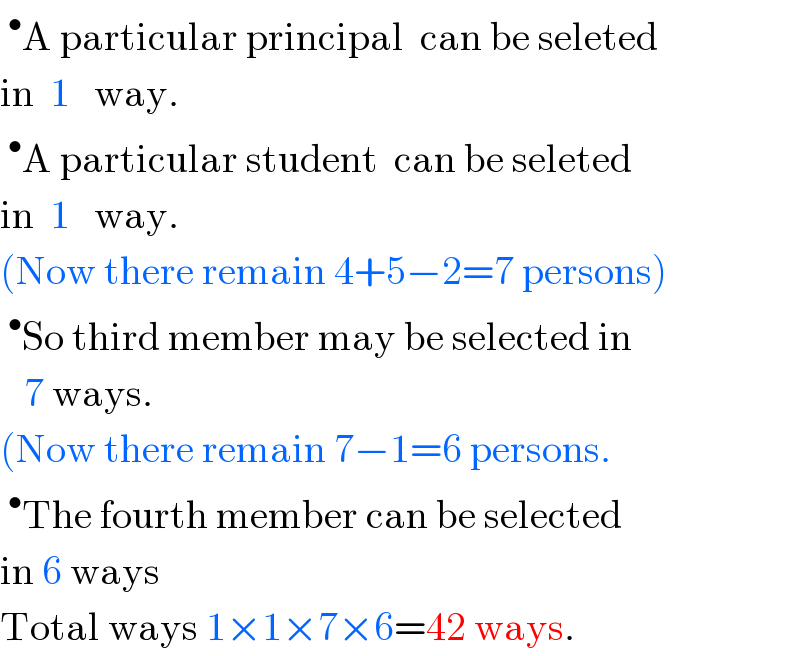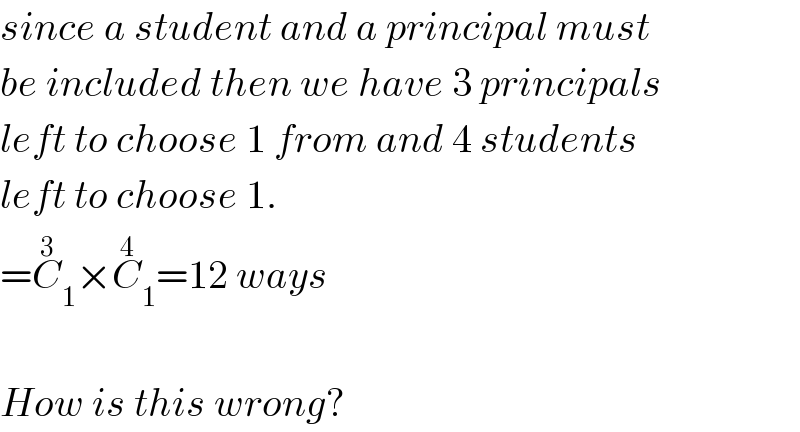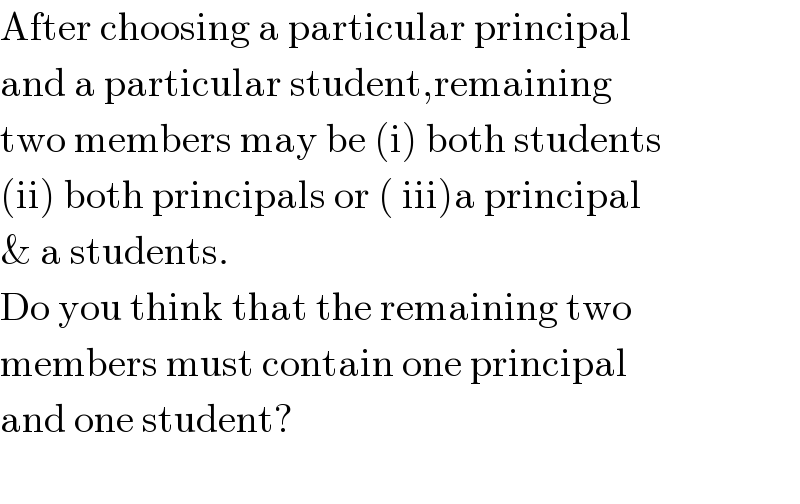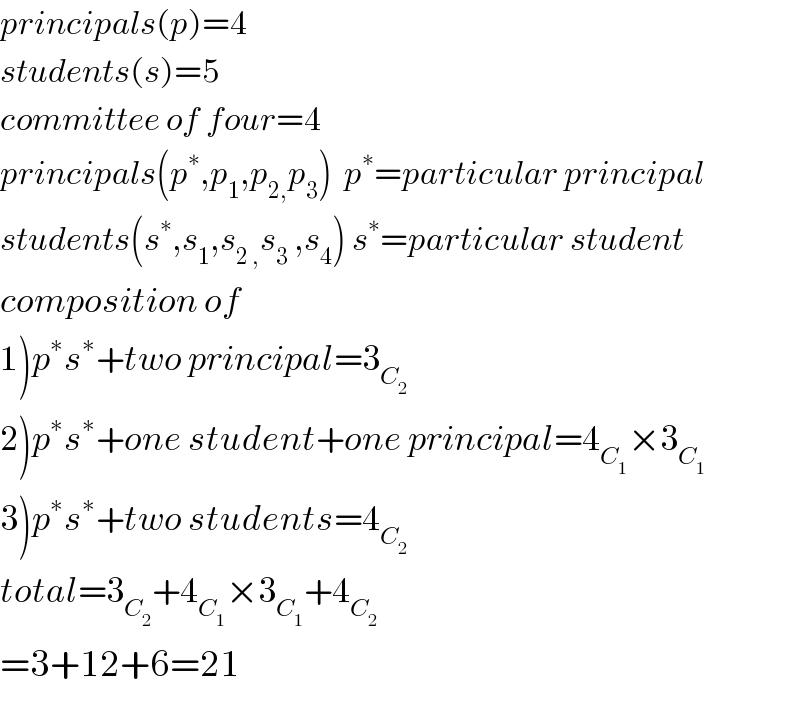
Question and Answers Forum
Previous in Permutation and Combination Next in Permutation and Combination
Question Number 34930 by NECx last updated on 13/May/18

Commented by Rasheed.Sindhi last updated on 13/May/18

Commented by NECx last updated on 13/May/18

Commented by Rasheed.Sindhi last updated on 13/May/18

Answered by tanmay.chaudhury50@gmail.com last updated on 13/May/18

Commented by Rasheed.Sindhi last updated on 13/May/18

Commented by NECx last updated on 13/May/18

Commented by NECx last updated on 13/May/18

